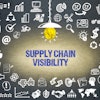Pan-European R&D project produces communications system to ensure fast response to accidents involving dangerous materials in transit
Brussels — July 29, 2005 — A pan-European research and development project has produced a satellite-based communications system to monitor rail freight between Europe and Asia, with geostationary and orbiting satellites integrated in a single antenna to ensure a fast response mechanism to potential hazards when dangerous materials are being moved.
This initiative, called Logchain Translog Safety and conducted under the aegis of Europe's Eureka project, is intended to make transporting goods by rail safer and more efficient. The monitoring center for the satellite system could be situated anywhere, according to need, according to the project's leadership.
"We have created an efficient and reliable telematics system for the monitoring of rail freight using modern satellite communications," said Peter Meinke, development director at German project partner Ingenieurgesellschaft für Angewandte Technologie. "It enables rapid response to alarms and will reduce unit loss during a journey."
Rapidly Growing East-West Trade
Trade between Asia and Europe is growing rapidly, with the exchange of raw materials and finished goods feeding the need for mass rail transportation. Europe has long relied on rail transport, and Europeans generally feel that modern rail transport is efficient, environmentally friendly and particularly effective for transporting mass cargo over long distances.
Collecting data and creating a database containing information about consignments, routes of transported goods and their status, as well as threats, irregularities and damage ensures that rail transport is a well-organized and attractive means of shipping goods, according to the initiative's proponents.
"Our satellite-based communication system works worldwide and does not need terrestrial GSM communication, which is not always available along railway lines, especially in eastern countries such as the Ukraine or Russia and in the east-west traffic corridors," added Meinke.
Very long distances
Such monitoring is particularly important in the transfer of hazardous materials over very long distances. The status of railway vehicles is gathered by sensors, which transfer the collected data into a transceiver and via satellite to the control center. A complete list of the types of railway vehicles, the features of the hazardous goods and the train number is held at the control center, together with details of the civil protection services available along the route.
"If there is an accident, such as a derailment, the sensors automatically alert the control center," explained Meinke. "The position of the train is given so that a report can be sent immediately to the civil protection services in the area, reporting the accident and the nature of the potential hazard."
This is made possible by the uninterrupted monitoring service that the new system delivers. The use of both geostationary and orbiting satellites and the switching technology developed by the German and Polish project partners in this ¬0.9 million ($1.1 million) EUREKA project allows the satellite systems to be integrated into a single antenna, providing blanket coverage.
The development of this technology required close cooperation between the partners, according to Meinke. "This is only possible in a EUREKA project, which helps [small and midsize enterprises (SMEs)] to contend with larger competitors," he said. The partners have successfully demonstrated the system to railway authorities and have already convinced the Polish Railway Authority to adopt it.
The Eureka initiative aims to strengthen European competitiveness by promoting cross-border, market-oriented, collaborative R&D. It enables industry and research institutes from 35 member countries and the EU to collaborate in a bottom-up approach to developing and exploiting innovative technologies. Eureka is marking its 20-year anniversary this year.
Additional Articles of Interest
— In order to perform on a world-class level, companies must redesign the supply and service chains to meet market demands. Dramatic changes are in order. Read more in the SDCExec.com article "Leveraging Supply Chain Logistics: Get Physical and Agile."
— How can you beat the trends and lower your less-than-truckload costs, even in a seller's market? For a guide to help you get started, read the SDCExec.com article "LTL Sourcing: Success for Buyers In A Seller's Market."
— How are outsourcing and supply chain tasks such as purchasing and inventory management tied to "network-centric operations?" What is a network-centric operation? Read the SDCExec.com article "The Future of Supply Chain Management: Network-centric Operations and the Supply Chain" to find out.
Brussels — July 29, 2005 — A pan-European research and development project has produced a satellite-based communications system to monitor rail freight between Europe and Asia, with geostationary and orbiting satellites integrated in a single antenna to ensure a fast response mechanism to potential hazards when dangerous materials are being moved.
This initiative, called Logchain Translog Safety and conducted under the aegis of Europe's Eureka project, is intended to make transporting goods by rail safer and more efficient. The monitoring center for the satellite system could be situated anywhere, according to need, according to the project's leadership.
"We have created an efficient and reliable telematics system for the monitoring of rail freight using modern satellite communications," said Peter Meinke, development director at German project partner Ingenieurgesellschaft für Angewandte Technologie. "It enables rapid response to alarms and will reduce unit loss during a journey."
Rapidly Growing East-West Trade
Trade between Asia and Europe is growing rapidly, with the exchange of raw materials and finished goods feeding the need for mass rail transportation. Europe has long relied on rail transport, and Europeans generally feel that modern rail transport is efficient, environmentally friendly and particularly effective for transporting mass cargo over long distances.
Collecting data and creating a database containing information about consignments, routes of transported goods and their status, as well as threats, irregularities and damage ensures that rail transport is a well-organized and attractive means of shipping goods, according to the initiative's proponents.
"Our satellite-based communication system works worldwide and does not need terrestrial GSM communication, which is not always available along railway lines, especially in eastern countries such as the Ukraine or Russia and in the east-west traffic corridors," added Meinke.
Very long distances
Such monitoring is particularly important in the transfer of hazardous materials over very long distances. The status of railway vehicles is gathered by sensors, which transfer the collected data into a transceiver and via satellite to the control center. A complete list of the types of railway vehicles, the features of the hazardous goods and the train number is held at the control center, together with details of the civil protection services available along the route.
"If there is an accident, such as a derailment, the sensors automatically alert the control center," explained Meinke. "The position of the train is given so that a report can be sent immediately to the civil protection services in the area, reporting the accident and the nature of the potential hazard."
This is made possible by the uninterrupted monitoring service that the new system delivers. The use of both geostationary and orbiting satellites and the switching technology developed by the German and Polish project partners in this ¬0.9 million ($1.1 million) EUREKA project allows the satellite systems to be integrated into a single antenna, providing blanket coverage.
The development of this technology required close cooperation between the partners, according to Meinke. "This is only possible in a EUREKA project, which helps [small and midsize enterprises (SMEs)] to contend with larger competitors," he said. The partners have successfully demonstrated the system to railway authorities and have already convinced the Polish Railway Authority to adopt it.
The Eureka initiative aims to strengthen European competitiveness by promoting cross-border, market-oriented, collaborative R&D. It enables industry and research institutes from 35 member countries and the EU to collaborate in a bottom-up approach to developing and exploiting innovative technologies. Eureka is marking its 20-year anniversary this year.
Additional Articles of Interest
— In order to perform on a world-class level, companies must redesign the supply and service chains to meet market demands. Dramatic changes are in order. Read more in the SDCExec.com article "Leveraging Supply Chain Logistics: Get Physical and Agile."
— How can you beat the trends and lower your less-than-truckload costs, even in a seller's market? For a guide to help you get started, read the SDCExec.com article "LTL Sourcing: Success for Buyers In A Seller's Market."
— How are outsourcing and supply chain tasks such as purchasing and inventory management tied to "network-centric operations?" What is a network-centric operation? Read the SDCExec.com article "The Future of Supply Chain Management: Network-centric Operations and the Supply Chain" to find out.


















